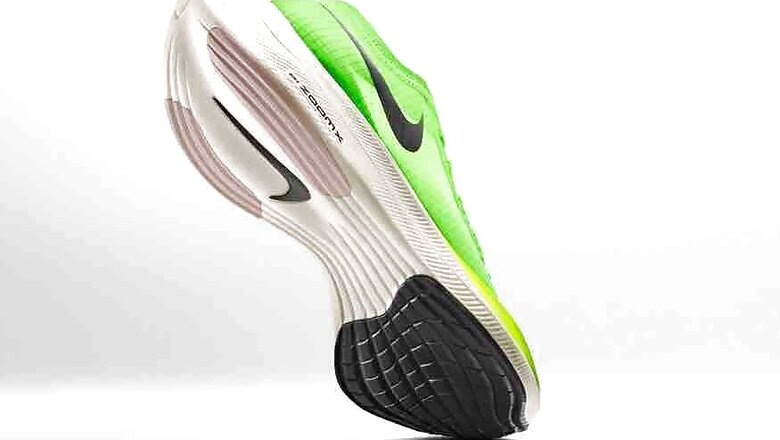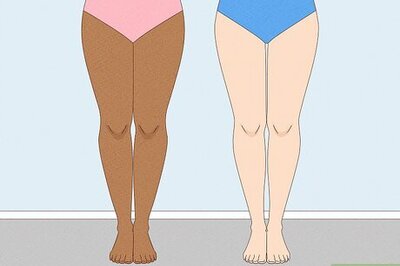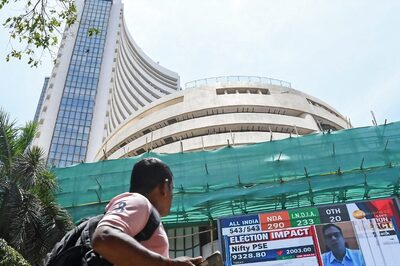
views
The sport governing body World Athletics has ruled that the Nike Vaporfly shoes, which were dragged into controversy because they are significantly better than anything the rivals make, will not be banned. Not only are the Nike Vaporfly not banned from the Olympics but have been given the seal of approval by World Athletics. This ruling comes at a time when many believe that that running shoes using the Nike Vaporfly technology, including the Vaporfly Next%, can improve marathon times by one-to-two minutes for elite athletes wearing them.
The rule amendments approved by the World Athletics Council now say, “The sole must be no thicker than 40mm.” Additionally, “the shoe must not contain more than one rigid embedded plate or blade (of any material) that runs either the full length or only part of the length of the shoe. The plate may be in more than one part but those parts must be located sequentially in one plane (not stacked or in parallel) and must not overlap.” World Athletics also says that for rivals trying to match their shoes with the Nike Vaporfly (or any other shoe that sits at the pinnacle of tech at any point of time) will have to make it available in stores for consumers to buy. Else, it will be considered a prototype. “From 30 April 2020, any shoe must have been available for purchase by any athlete on the open retail market (online or in store) for a period of four months before it can be used in competition. If a shoe is not openly available to all then it will be deemed a prototype and use of it in competition will not be permitted,” the new rules clarify.
The first Vaporfly shoes were introduced in 2016, and incidentally was worn by the first three finishers in the Rio Olympic men’s marathon that year. The Vaporfly shoes have a new mid-sole foam called Pebax, which is lighter but more robust. The integrated carbon-fibre plate, that along with condensed and thick midsole provide the sort of forward push that shaves off a few seconds from your lap.
A quick look at some of the records that the Nike Vaporfly has logged make for a rather interesting reading. It was in December 2016 when Nike announced the Breaking2 project. At the time, Nike wanted to break the 2-hour barrier for marathon runs, which meant beating the then men’s world record time of 2:02:57 by as much as 3 percent. Nike decided to take a look at everything that goes into making a running shoe, including the materials, design, engineering and make even the smallest of improvements necessary to achieve that target. In May 2017, the Breaking2 project came close to what it wanted to achieve—Kenyan runner Eliud Kipchoge finished an event at the Autodromo Nazionale Monza race track in Italy, in 2:00:25 on the clock. In the same week, Kenyan runner Brigid Kosgei set a new world record in the women's event in the 2019 Chicago marathon, beating the old one by 81 seconds. She also wears the Nike Vaporfly.
Sports scientist Ross Tucker believes that the physical energy that Kipchoge needed for his 2:01.39 world record time in a marathon in Vienna last year while wearing the Nike Vaporfly shoes equated to a 2.03 marathon time in other running shoes
Strava, the global social network for athletes, has earlier said that the median marathon finish time for runners in the Vaporfly Next% was 8.7% faster than runners wearing the next fastest shoe, the Adidas Boston—that’s a lifetime on the track. If you want the benchmark in running shoes, look no further.
You can buy the Nike ZoomX Vaporfly NEXT% in stores for around Rs 19,995. Nike market share in running shoes reached a record high last year, and a lot of that could be because of the sales of the Vaporfly shoes in stores. The Motley Fool reports that running shoes are a $13 billion market that is expected to grow 5% annually over the next 5 years—and Nike already holds 51% of the market while Asics is a distant second at 15% market share and Adidas is third at about 6% market share.




















Comments
0 comment